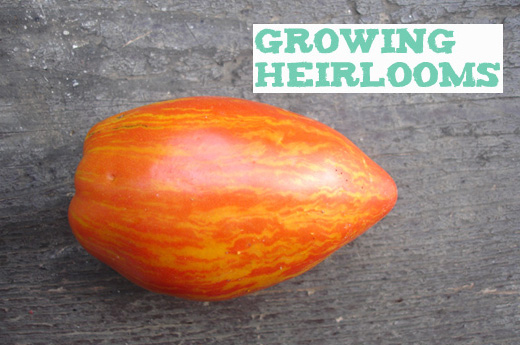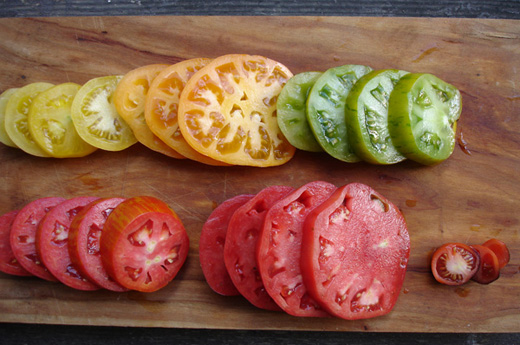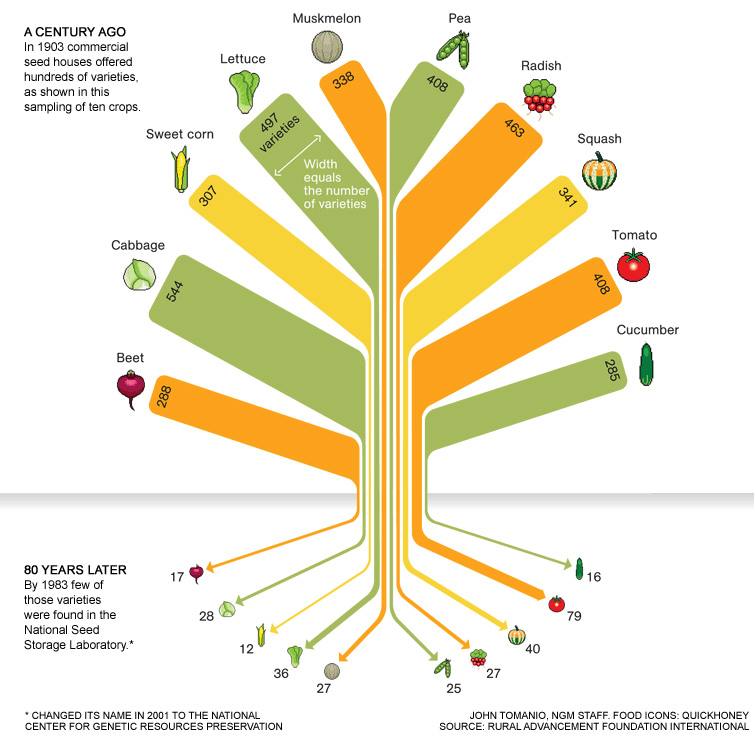by guest blogger Robyn Jasko, cofounder of Grow Indie
Growing heirlooms is a great way to preserve the flavor, sustainability, and legacy of these unique varieties for generations to come.
Of all the types of seeds, heirloom seeds are my favorite to grow, each with a story all its own. From striped beets to purple carrots, heirloom varieties offer an amazing array of flavors, sizes, textures, and colors you just won’t find in your supermarket. Why grow the standard red tomato when you can grow a tasty ‘Aunt Ruby’s German Green,’ a ‘Cherokee Purple,’ or the majestic two-pound ‘Pineapple’ tomato with its stunning tie-dye hues?
These Old World varieties remind us of what vegetables used to taste like before the mass industrialization of food came into play. Unlike hybrid plants, heirloom vegetables produce seeds that will grow into a variety identical to their parent plant. This means that if you grow heirlooms in your garden, you can grow your own seed supply and be completely self-reliant, versus people who need to buy seeds every year. You can also pick fruit off the best-looking plants to develop your own generation of heirloom plants that thrive in your garden environment.
But sadly, heirloom varieties are vanishing, and at an alarming rate. According to National Geographic, 93 percent of the varieties that used to be available in America in 1903 are now extinct. Quite a scary thought when you think about it. It really shows how vegetable varieties have dwindled down to the mainstream choices you see at the supermarket.
Since the mass industrialization of our food supply, people have gotten used to eating vegetables without even thinking about what’s in season. Over the years, as more emphasis was placed on a variety’s ability to be shipped and transported without bruising or splitting, taste and nutrition became secondary.
In the book Tomatoland: How Modern Industrial Agriculture Destroyed Our Most Alluring Fruit, written by two-time James Beard Award–winning journalist, Barry Estabroo, the author explores the human and environmental costs of the $5 billion fresh tomato industry. He learned about the dark side of having year-round tomatoes, from fields sprayed with more than 100 different herbicides and pesticides to tomatoes picked hard and green, then artificially gassed until their skins acquire a marketable hue. He discovered that although modern plant breeding has tripled yields, the typical supermarket tomato of today has only a fraction of the calcium, vitamin A, and vitamin C, along with 14 times the sodium, of the heirloom tomatoes of generations past.
Ready to try growing a few heirlooms this year, or looking to grow an all-heirloom garden? Baker Creek Heirloom Seeds, Sustainable Seed Co., and Seed Saver’s Exchange all have a fantastic selection of heirloom seeds to add a new dimension of color, flavor, and history to this year’s garden.
 Robyn Jasko, creative services director at Runner’s World magazine at Rodale, is a local-foods activist, community garden starter, and cofounder of Grow Indie, a site promoting sustainable lifestyles, homesteading, eating well, and living local. Her first book, Homesweet Homegrown: How to Grow, Make and Store Food, No Matter Where You Live, was released May 2012.
Robyn Jasko, creative services director at Runner’s World magazine at Rodale, is a local-foods activist, community garden starter, and cofounder of Grow Indie, a site promoting sustainable lifestyles, homesteading, eating well, and living local. Her first book, Homesweet Homegrown: How to Grow, Make and Store Food, No Matter Where You Live, was released May 2012.







Being a novice at seed starting, I was thrilled last year with the delicious heirloom tomatoes started with a friend’s family favorites.